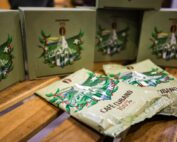Guanahacabibes: Biodiverse, exuberant and unique

Guanacabibes. Photo: Panchito González López
The Guanahacabibes Peninsula is lies on the westernmost tip of Cuba, a region distinguished from the rest of the country considered one of the areas with the greatest biodiversity in both terrestrial and marine areas, and an exceptional location for ecotourism.
About 130 kilometers from the city of Pinar del Río, those making the long journey are rewarded when they arrive, on contemplating the excellent degree of natural conservation, precisely due to the isolation of human communities and the fact that its population is only about 1,300 inhabitants spread across four locations.
But the best way to enjoy a visit is with one of the experts from Guanahacabibes National Park. In our case, it was Mario Borrego, head of the Public Use and Environmental Education program. He briefly described the site as “a true natural treasure.” This is where our discovery of nature, history and local legends began.
Something for every taste
The Park offers a variety of options for visitors, including interpretive trails such as Cueva Las Perlas, considered the largest of the more than 150 studied on the peninsula. This is a tour that begins at the Visitor Center in La Bajada and ends at the cavern located 1,500 meters away, Borrego explained.
Another option is the excursion from La Bajada to Cape San Antonio, lasting approximately five hours. Visitors have the opportunity to make stops at sites of scenic interest and other opportunities to appreciate very specific elements of the environment, such as birdwatching.
The Forest to the Sea Trail, he continued, lasts an hour and a half. Its main attraction is La Poza Redonda, a karst sinkhole and a type of cavern located right on the seashore.
When summer arrives, there are other possibilities such as sea turtle watching, a major tourist attraction as observation of these endangered species in their natural habitats is considered a privilege. Up to 800 turtles can be observed breeding on the peninsula each year.
Antonio Beach, named after a Spanish pirate who betrayed the Crown, is one of the nesting sites for these animals, and where they can most certainly be seen during their breeding season from May to September, although their peak season occurs in July and August.
This beach also has legends of hidden treasures, as it is accessible via a path that resembles a journey through a forest. At the end of the not-so-long path, you will find fine white sand and a sudden blue that fills your gaze.
Legends and documented
Legends and documented stories tell of pirates in this area chasing and attacking Spanish fleets laden with treasure from the Americas. The most curious thing is that there are still people obsessed with these stories, without realizing that the greatest treasure of the place is precisely its nature, as Borrego stresses.
In addition to the aforementioned ecotourism practices in Guanahacabibes, there is also the opportunity to observe the cliffs from a lookout point, and the wetland area—located in the Cape San Antonio Conservation Area—is a natural breeding ground for the American crocodile, with one of the largest populations in the western region.
Meanwhile, at the westernmost point of the country stands the Roncalli Lighthouse, built in 1849 and in operation since 1850, just four kilometers from El Francés Beach, part of the Las Tumbas beaches where the Villa Gaviota Cabo San Antonio tourist center is located.
The lighthouse is considered the greatest architectural gem from the Spanish era. It marks the beginning and end of Cuba, and there, as a lookout for sailors, it offers a unique view of varied blue-greens, right where the waters of the Yucatán Strait and the Caribbean Sea converge.
Diving in the sea is one of the area’s tourist attractions. Visitors can visit the María la Gorda International Diving Center, a privilege for travelers interested in exploring its crystal-clear waters and well-preserved coral reefs.
The beauty of the place is also partly due to the work of the experts in charge of the management plan for research, monitoring and protection of natural resources. They promote sustainable ecotourism activities and have an environmental education program with participation of local communities and the visiting public.
Guanahacabibes National Park continues to be a unique destination that combines natural and cultural richness with unforgettable and unrepeatable ecotourism experiences for those seeking to explore nature.
Source: Sol de Cuba

MORE NEWS










